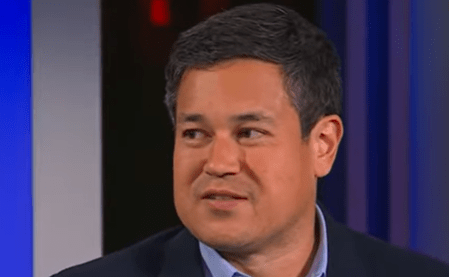
GOP: Anything short of 52-seat Senate majority would be a ‘failure’
Republicans believe they are in prime shape to win at least 52 seats in the Senate with only days to go until Election Day.
The GOP has long been favored to win back the upper chamber, but the size of its majority has been in question as the party’s candidates trailed against Democratic incumbents in a number of key swing states. Several of those races have narrowed, however, buoying Republicans’ hopes in the process.
Nearly a dozen GOP senators, Senate aides and operatives with experience on Senate races predicted to The Hill the party will hit the 52-seat mark. Most said the party brass will be left shaking their heads if they fall short of that goal.
“At this point, we have to have 52,” one GOP operative involved in Senate races said, arguing it is necessary especially after Republicans outspent Democrats in Ohio — considered their best pickup opportunity after West Virginia and Montana — by more than $20 million this cycle.
“If we can’t win a race with that level of outspending in a state Trump’s going to win between 8 to 10 points, that’s a failure,” the operative said.
Republicans hold 49 seats in the Senate and are certain to pick up West Virginia, where Sen. Joe Manchin (I) is retiring. They’ve also oozed confidence for months about picking up a 51st seat in Montana, where Republican Tim Sheehy has held a consistent lead over Sen. Jon Tester (D) in the reddest state on the battlefield.
According to a recent survey by The Hill/Emerson College, Sheehy holds a 4-point advantage over the incumbent Democrat, with other polls showing that his lead is nearly double that figure.
Party operatives have also grown increasingly optimistic about the state of play in Ohio. Sen. Sherrod Brown (D-Ohio) is locked in a close race with Republican Bernie Moreno, but Moreno appears to have the momentum as Brown’s lead has been sliced to a single point.
“We see the exact same polling pattern for Bernie Moreno as we did for JD Vance,” Jason Thielman, executive director of the National Republican Senatorial Committee (NRSC), recently said at a Ripon Society luncheon, referring to the Republican Ohio senator. He noted that Moreno holds a 2-point to 3-point lead in their internal polls.
Vance won his 2022 race over then-Rep. Tim Ryan (D-Ohio) by 6 percentage points after trailing in the polls for much of the contest.
“We feel very comfortable with the trajectory of that race,” Thielman said.
He acknowledged, however, that additional battleground races get “certainly much more difficult to predict.”
Those races include the “blue wall,” especially Pennsylvania and Wisconsin, where GOP operatives widely believe the party’s best chances are as both races have tightened in recent weeks. The nonpartisan Cook Political Report shifted both races into its “toss-up” column in recent months, where they joined Michigan.
In Wisconsin, operatives on both sides of the aisle note that GOP-leaning men have firmly moved into Republican Eric Hovde’s column, bringing the race close to even. Sen. Tammy Baldwin (D-Wis.) has also found herself on the back foot after consistent GOP messaging about her refusal to disclose assets, investments and business dealings of Maria Brisbane, her partner and a top Wall Street wealth adviser. Spouses of lawmakers are required to release that information, but because Baldwin and Brisbane aren’t married they don’t fall under that rule.
As for Sen. Bob Casey (D-Pa.), the three-term incumbent is staring down the toughest reelection challenge of his Senate career against Republican David McCormick. A second GOP operative involved in Senate races said the fate of the Pennsylvania Senate race, more so than in Wisconsin, will be tied to the top of the ticket. Pennsylvania is widely considered the most crucial race this cycle at the presidential level.
According to Decision Desk HQ, Casey and Baldwin have a 70 percent chance and 63 percent chance of winning reelection, respectively. A GOP strategist with experience working on Senate races argued that Casey will likely be tougher to oust as he has more of an incumbency advantage than Baldwin, who is in her second term.
“I feel really good where we’re at right now,” Sen. Markwayne Mullin (R-Okla.) said, adding that McCormick has been “tracking well” in the final stages. “I’m not betting on it, but I’d probably say 53 [seats].”
In fact, multiple GOP sources indicated there will be sizable concern if the party is unable to win either Pennsylvania or Wisconsin, especially if former President Trump carries either state over Vice President Harris.
“If we only end up picking up Ohio and Montana, I think it will be a real failure of a cycle,” the second GOP operative involved in Senate races said. “And frankly, if we’re dropping states that Trump wins … I think there needs to be some pretty serious introspection.”
That could be the case in five states if Trump wins the two battleground states along with Michigan, Nevada and Arizona. The latter two are widely considered to lean Democratic on the Senate side.
One person who has remained cautious in his predictions is Sen. Steve Daines (R-Mont.), the NRSC chair. He has consistently said that his goal is a simple 51-seat majority and has stopped short of going any further.
Some operatives are also quick to note that incumbents are tough to knock off, as evidenced by what happened in 2022. Democrats are hoping for a reprisal of last cycle that was marred on the GOP side by poor candidates who underwhelmed when all was said and done.
“Senate Republicans’ deeply flawed candidates are hurting their prospects across the entire Senate map. Their recruits’ lies, baggage and scandals have left Senate Republicans in the worst possible position in the closing week of the campaign,” said Tommy Garcia, a Democratic Senatorial Campaign Committee spokesperson, in a statement.
One seat Republicans remain confident they will cling on to is in Nebraska, which has suddenly come on to the map in the past month as Sen. Deb Fischer (R-Neb.) holds a narrow lead over Independent Dan Osborn. According to a recent New York Times/Siena College survey, she leads by a 2-point margin, while an Economist/YouGov poll released Wednesday showed her up by 7 percentage points.
Either way, Republicans remain angry that the race has even gotten to this point, especially after the Senate Leadership Fund spent $3 million to shore up her standing — money that could have been used in the final weeks in any of the battleground states.
“The entire situation is embarrassing. I don’t think she’s going to win by a lot,” one Senate GOP aide said. “It’s a real mess.”
The size of any potential majority is also of utmost importance to the GOP as they look ahead to what could be a brutal 2026 map that is headlined by possible bruising reelection battles for Sens. Susan Collins (R-Maine) and Thom Tillis (R-N.C.), with few opportunities to gain ground.
“It’ll be a major problem for the next cycle,” a third operative involved in Senate races noted about the possibility of a 52-seat majority. “The Ohio Senate race is the most important race of the 2026 cycle.”



